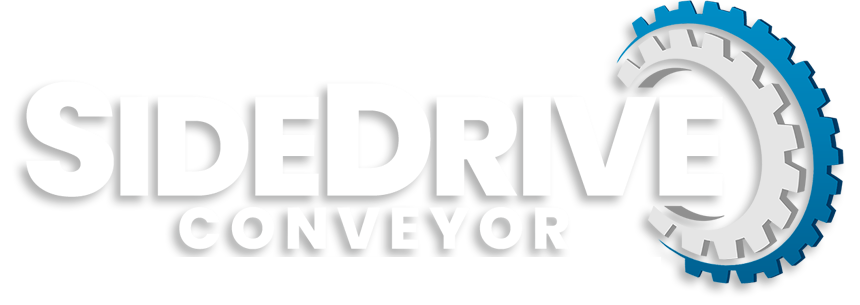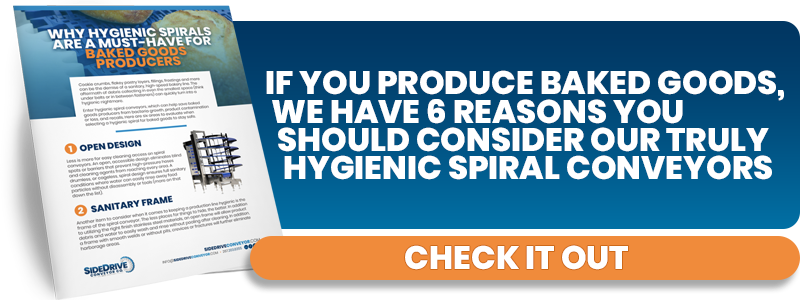7 min read
Exploring SideDrive's Unique Conveyor Configuration with Food Engineering
By: Feature from Guest Publication on Jun 25, 2021 8:00:00 AM
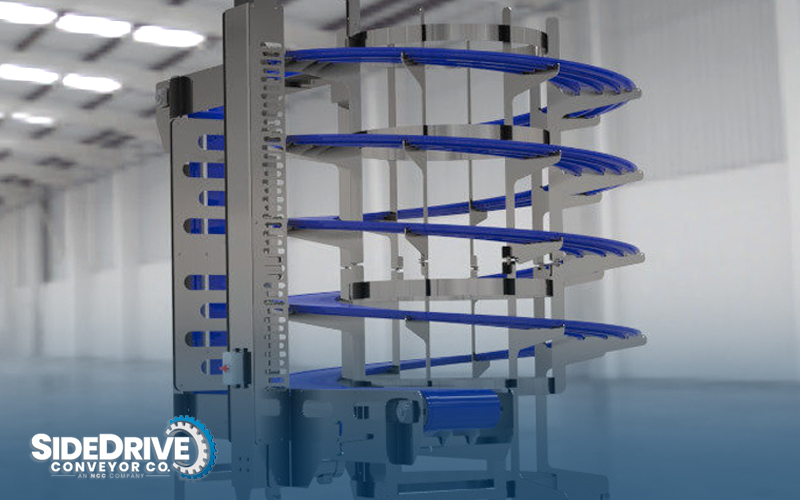
When you think of conveyors, you think of conventional pulley-driven or drum-motor powered designs, however, this system uses small motors geared to the belt’s edge.
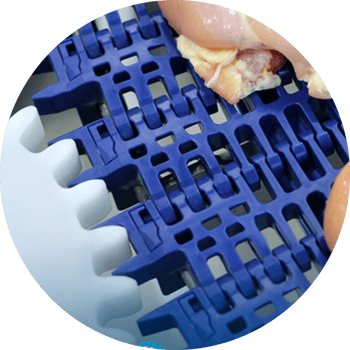 And now for something completely different, to borrow from Monty Python’s creators. An edge-driven conveyor belt—or maybe call it a side-driven conveyor. And so, SideDrive Conveyor Company was born—coming up with a technology that drives a plastic conveyor belt from the edge, or side. Using Intralox belting, SideDrive Conveyor decided to veer away from the usual pulley-driven or drum-motor-driven conveyor and move the belt from its edge with a sprocketed wheel.
And now for something completely different, to borrow from Monty Python’s creators. An edge-driven conveyor belt—or maybe call it a side-driven conveyor. And so, SideDrive Conveyor Company was born—coming up with a technology that drives a plastic conveyor belt from the edge, or side. Using Intralox belting, SideDrive Conveyor decided to veer away from the usual pulley-driven or drum-motor-driven conveyor and move the belt from its edge with a sprocketed wheel.
But why? Having grown up on a farm and being quite familiar with conveyors and having seen zillions of conveyors operating in food plants using conventional drive technology, I must admit my first reaction was one of puzzlement. And SideDrive Conveyor claims to be the first conveyor company to focus exclusively upon such a device and they say they have the most sanitary spiral in the world.
I can visualize driving a belt from the edge might have certain advantages, but I was hard pressed to figure out what they are. Maybe keep motors away from food? Maybe increase belt life through reduced wear? Well, to find out, I asked Kevin Mauger, president of the new company to explain why he says the configurations are limitless, and the possibilities are endless with this new technology. Mauger is also president of NCC Automated Systems, which has a Preferred Supplier Agreement with Intralox.
Food Engineering: Kevin, I’m not a mechanical engineer, but rather an old electrical engineer. But we have lots of readers who are mechanical engineers and will grasp this concept. So, of course, my first question is: Why a sprocketed edge drive?
Kevin Mauger: Great question! Driving from the side allows us to put multiple drives on the same belt. By synchronizing them and driving the belt in multiple locations, this allows us to create belt paths that would normally have too much tension with a single drive. Without this, the tensile strength of the belt would be exceeded and it would break. With multiple drives, we reset the tension back to zero at each drive location, and don’t over-stress the belt.
There are other ways of dealing with tension such as creating powered drums that rotate with the belt or bearings on the bottom of the belt. The benefits vary from one technology to the other. SideDrive is best with sanitary applications that require washdown, or layouts that require a lot of flexibility as we have less design constraints than some other solutions.
Food Engineering: You claim to be the first company with such a drive. What gave you the idea? How did you come up with the idea?
Kevin Mauger: Well, we’re not. I hope we didn’t imply that. We are the first company in the world with a singular focus upon the technology. SideDrive is all that we do and we have invested heavily in R&D, engineering software automation, tooling and manufacturing processes in order to drive this technology to new levels. A few others do it, kind of, but it is not their exclusive focus.
Food Engineering: Are you the key designer/innovator behind SideDrive?
Kevin Mauger: Not at all. We have an entire team of people designated to the business. My role was to create the vision for the company, set up the team, and teach them how we start up and run the business in order to be the best in the world at what they do.
Food Engineering: Did Intralox already have a belt designed for side- or edge-driven functionality, or did you work out a design with Intralox?
Kevin Mauger: This basic belt has been in existence since 2005, but the side-driven version was released in 2016.
Food Engineering: What are the advantages/disadvantages of using a side-driven conveyor?
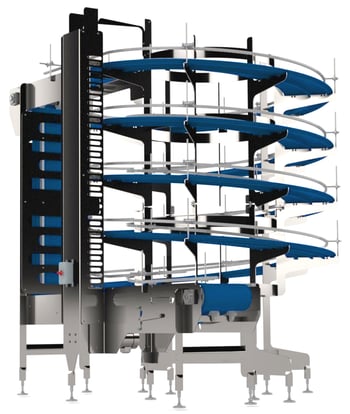 Kevin Mauger: The major advantage over other traditional food-based spiral technologies is that it doesn’t require a rotating drum or cage. Not only is the drum large and expensive, but it also makes cleaning more cumbersome because it is hard to clean and access the inside of the drum. We believe that the SideDrive system is the easiest spiral in the world to clean, which helps reduce risk of food contamination, saves labor and reduces water usage.
Kevin Mauger: The major advantage over other traditional food-based spiral technologies is that it doesn’t require a rotating drum or cage. Not only is the drum large and expensive, but it also makes cleaning more cumbersome because it is hard to clean and access the inside of the drum. We believe that the SideDrive system is the easiest spiral in the world to clean, which helps reduce risk of food contamination, saves labor and reduces water usage.
The other advantage is that because we can put drives wherever we’d like, we can create more flexible layouts specific to each application. Belt tension is always a constraint with most conveyors, but not with ours as multiple drives satisfy this concern.
Finally, we can design infinite length conveyors that are “transfer-less.” This benefits extremely sensitive products that cannot be transferred conveyor to conveyor well.
The major disadvantage is that it is only a practical solution when you need multiple drives on the same belt. If you can create a conveyor with a single drive, a traditional drive arrangement will be a more cost-effective solution.
Another disadvantage is that as of today, the belt technology is not rated to be utilized within a freezer.
Food Engineering: What are good food/beverage applications for SideDrive?
Kevin Mauger: The primary applications are when a customer wants a spiral up or down and it is a sanitary application. This can be either feeding, discharging from a spiral or a cooling or curing operation.
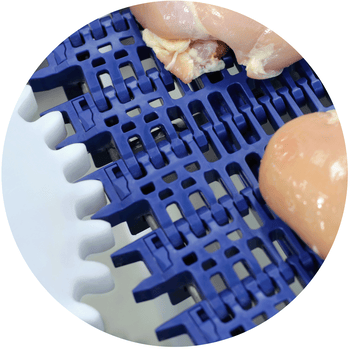 We can handle any food product, including direct, unpackaged products. It is also great in primary wrapped product applications when there is a risk of leakers or partially wrapped products coming down the line, creating a need to wash down the conveyors. This would otherwise create a mess on a conveyor that isn’t designed to be easily cleaned and/or food-safe.
We can handle any food product, including direct, unpackaged products. It is also great in primary wrapped product applications when there is a risk of leakers or partially wrapped products coming down the line, creating a need to wash down the conveyors. This would otherwise create a mess on a conveyor that isn’t designed to be easily cleaned and/or food-safe.
We are seeing a lot of interest in the following food segments: pizza, ice cream, frozen RTE meals, IQF, bakery, meat, seafood, eggs and pet food.
It is also ideal for products that risk loss such as spillage or damage when being transported over transfers. The limitation of transfers is a great solution here.
Food Engineering: What kind of motor/drive/gearing setup do you need for SideDrive? How does it compare with conventionally pulley-driven systems in terms of energy, parts/components lifecycles, conveying capacities?
Kevin Mauger: Another great question! We utilize either a mechanical or electronic synchronization strategy to ensure that all sprockets are turning at the same rate. If mechanical, we utilize a common drive shaft and if electronic, we utilize electronic gearing to ensure the same.
The concept in general uses less energy than most conveyors because we normally return the belt path on a direct shot (versus under the conveying surface), which reduces the footage of the belt, and thus the weight of the belt. Less weight to pull; less energy required.
It also requires less energy to drive than a cage or drum-style spiral because we don’t have a large cage to drive or rotate.
Food Engineering: How about washdowns? Do conveyors need to be disassembled for cleaning? What are the steps for cleaning adequately?
Kevin Mauger: This is the best part. The design is incredibly open and easy to clean and we’ve borrowed sanitary design principles that our parent company has been perfecting for 35 years. We’ve all but eliminated flat surfaces, harborage points, and the fact that our spirals don’t have drums makes it inherently more open. The wearstrip is solid UHMW, incredibly smooth and can be removed without tools. The overall frame is a cantilever style design that leaves the sides completely open for fantastic visibility and access to clean.
Food Engineering: Can you place a drive mechanism on a curve, or should it be on a straight path? How do you synchronize sprocket drives where you need to have more than one drive?
Kevin Mauger: Drives can be placed on curves or on straight sections. If we can’t mechanically couple the drive sprockets, we utilize high resolution encoders (more than 1000 pulses per revolution) and electronic gearing and camming to ensure all sprockets are turning at the same rate.
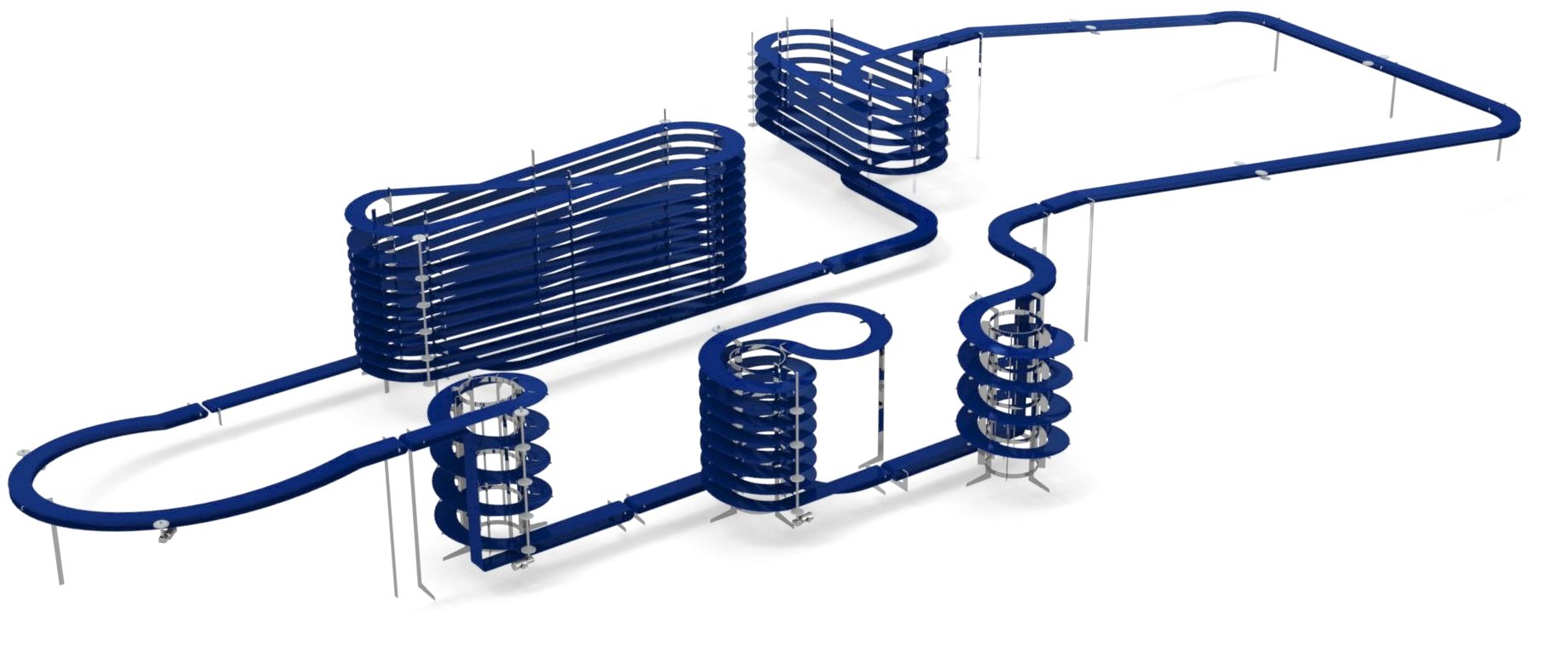
Food Engineering: How does loading a conveyor with SideDrive compare to loading a conventionally driven conveyor?
Kevin Mauger: Generally, we will be able to handle heavy loads for two reasons. One, it is a very heavy-duty belt, and two, we can simply include more drives as required to satisfy the tension requirements. That being said, with a traditional end drive and multiple sprockets, you can handle more load with a single drive than with an edge driven drive. So, it really depends upon the application to compare the two. Many times a traditional end driven conveyor will be more practical.
Food Engineering: What did I miss on this subject?
Kevin Mauger: I don’t think you missed anything, but I’ll take the opportunity to emphasize two points:
- We believe that we make the most sanitary, food-safe spiral in the world.
- We are the only company in the world with a singular focus on side-driven technology from Intralox.
Food Engineering: Is SideDrive available now? Are you looking for partners?
Kevin Mauger: Most certainly. We are 100% operational. There has been an extreme amount of interest and we are actively manufacturing products.
The following article was written by Wayne Labs of Food Engineering. You can view the original article here.
Related Posts
SideDrive Launches to Solve Sanitary & Gentle Handling Challenges
First company to “exclusively” utilize edge-driven belt technology from Intralox for flexible and...
Food Engineering Podcast: A New Era in Hygienic Conveyor Design with Kevin Mauger
Food Engineering's podcast provides you with exclusive and engaging industry coverage in an audio...
A Modular Side-Driven Spiral Conveyor For Improved Production
The configuration possibilities are endless with SideDrive’s vertical conveyor systems. Inclines,...
